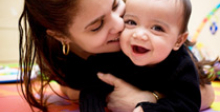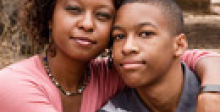Internal mini form
Contact Us Today
It’s an unbearable circumstance faced by some children and adults with disabilities. Abuse, however, can be dealt with and prevented by people with special needs and those who care about them if the signs are recognized for what they are.
What is abuse?
This may seem like a simple enough question, but unfortunately, the definition of abuse is both multi-layered and complex. Abuse is best defined as any activity that a person takes to rob another of his or her liberty, rights, bodily integrity or dignity, whether it is purposeful or unintentional. These actions include neglect of a person’s health, inaction and psychological needs are also considered abusive.
Abuse occurs in a wide array of relationships and arrangements; people are victims of abuse at the hands of parents, children, spouses, caregivers, employers, and educators – anyone that has the responsibility of caring for, or working with, and individual with special needs. Activities that are both deliberate and accidental are considered abusive because the end result for the person affected by such behavior is the same: Someone has been treated in a harmful, and often exploitive fashion.
People with special needs face a number of challenges, but for some, the most insidious events are those that are considered abusive. Though people that don’t have physical or intellectual disabilities face abuse at the hands of others; numerous studies have documented that people with special needs are at a greater risk of suffering from abuse in a variety of settings, including their own homes.
Whether it’s a perception of helplessness or the fact that people with special needs may not be able to communicate what’s happening to them, the reasons that this sad state of affairs continues to exist is in part because people often don’t have the tools to recognize abuse when it occurs. When a person is living in an abusive situation, it can be difficult to rectify his or her circumstances, but it’s not impossible.
The most successful way to mitigate abuse is to know what a fundamental violation of a person’s rights and liberties abuse of any kind represents. Although complex circumstances make people with disabilities vulnerable to abuse, there are some safeguards and strategies that can be followed to help them head off the possibility of abuse, and harness resources to stop abusive actions when they occur.
Often, abuse takes places in situations with the following characteristics:
- A relationship where two or more individuals have unequal power
- A situation where blind trust has been placed on a person
- Situations where someone has been granted broad legal and financial powers
- Circumstances where people are from divergent social classes
- Situations that involve people that have significant age differences
- Situations where resources intended to care for people are severely compromised
Abuse can take place almost anywhere; in some cases a person with special needs is not even safe in his or her home. Some of the places where abuse can occur include:
- Home
- School
- Public places
- Medical settings
- Day care settings
- Group living situations
- Work
- Leisure settings
- Social service settings
- Church
Victims of abuse, especially if they are children, face serious and tragic consequences because of abuse. The physical damage caused to the body when someone harms another person physically can cause myriad medical issues that range from treatable to permanent. It’s not uncommon to discover that people who have suffered abuse are malnourished, have painful abrasions and bruises, or broken bones. In the most severe cases, a child may suffer from burns, head trauma, injuries to organs and other life-threatening injuries.
Emotionally, the consequences of abuse are equally severe. Abused children may develop mood swings and changes in behavior, a loss of self-esteem, anxiety and an inability to communicate with adults and other young people, and a lack of trust in adults that can potentially help put an end to abusive behavior and practices.
Who is responsible for abuse?
The responsibility for abuse generally falls on a person that has a more powerful role in the relationship. This power arises out the fact that someone, generally older than the victim, has some level of responsibility for their welfare, controls the person’s finances or the victim’s living situation. Because of this inequity, it makes it difficult for a person in a weaker situation to break free this harmful bond. Further complicating the matter is that abusers are often adept at explaining their behavior; for instance, they can tell authorities that a victim’s bruises are the result of a fall. Because a person with disabilities may fall, this is an explanation that seems viable on its face.
The people that are most often responsible for abuse include:
- Parents, family members
- Co-inhabitants, including those that are disabled
- Paid staff or volunteers in institutional settings
- Influential leaders (church, law enforcement, education)
- Teachers
- Neighbors and acquaintances
- Medical professionals
- Social workers, social service workers
- People that work for government or statutory agencies
- Law enforcers
- Strangers
In most cases, perpetrators of abuse know the person they intend to harm. Abuse most often takes place when someone is in close quarters or within physical proximity to another person. Exceptions to this rule are abusive practices that are committed via personal computer; because people with disabilities often use computers, they are targeted for financial abuse and vulnerable to identity theft.
Why are children with disabilities more likely to be victimized?
Although the reasons that children with special needs are vulnerable to abuse are difficult to nail down, its prevalence is one that is easy to determine. A 2001 study showed that children with disabilities are 22 to 70 percent more likely to become victims of abuse. A previous study indicated that children with disabilities were 3.4 times more likely to be victims of abuse than their able-bodied counterparts.
The main reasons that people with disabilities, especially if they are children, are vulnerable to abuse is that they are often unable to communicate to others what is happening to them, and they may have physical conditions that make it difficult or impossible to walk away from a bad situation.
Like other aspects of disability, however, the reasons that abuse occurs – especially if it is prolonged – is more complicated. Initially, people in a position to help a child or vulnerable adult may not recognize signs of abuse in a child with physical or intellectual disabilities. A child may not be able to articulate what is happening in an articulate way, and often, others cannot fill in the gaps or draw conclusions.
Additionally, depending on the nature of a child’s challenges, he or she may not be able to sort out what is normal behavior versus what is abusive. This is a difficult situation because a child may be bonded to an abuser, which sets up a difficult psychological dynamic between a child and his or her abuser because the child does not understand what boundaries are, and why they should not be crossed.
There may also be a tendency for adults to believe a caregiver, as opposed to a child, because adults may have an erroneous belief that a child is misperceiving a situation; as an adult may seem to have more credibility. This can be especially true in cases where the abuse is severe, or perhaps unfathomable, to the authorities.
Although there has been a public push to believe – and at least investigate – abuse allegations, this situation persists. The only way to stop abuse, however, is to make it known.
Abuse
It’s shocking to think that there are people who would harm anyone, much less someone with special needs. Sadly, though, people with special needs can be vulnerable to such treatment at home, in school, at work and in public. There are, however, some particular safeguards people can implement that reduce the likelihood of mistreatment or harm. About Abuse
About Abuse
Ways in which to combat abuse

Disability Organizations
People tend to think about disability in terms of limits placed on a person’s physical, mental, social or developmental ability to function. Once people move past myths and perceptions about disability, they learn that it’s more about a person’s ability to compensate for special needs than it is about not being able to complete tasks in a predictable manner. Disability advocacy is about furthering equal opportunity for inclusion, accessibility and participation for all.
Learn more
About Disability
- Disability Etiquette
- People First Language
- Disability and Government Assistance
- Disability Advocacy Organizations
- Amnesty International
- World institute on Disability
- Administration on Intellectual and Developmental Disabilities
- American Association on Intellectual and Developmental Disabilities
- American Association of People with Disabilities
- National Association of Councils on Developmental Disabilities
- National Center on Birth Defects and Developmental Disabilities
- National Institute on Disability and Rehabilitation Research
- National Organization on Disability
- TASH
- Disability Policy Organizations
- European Disability Forum
- United Nations Enable
- World Health Organization – Disabilities an Rehabilitation
- Administration on Intellectual and Developmental Disabilities
- National Association of State Directors of Developmental Disabilities Service
- National Council on Disability
- United States International Council on Disabilities
- Disability Legislation









